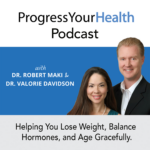
Which thyroid medication is best? This is a question we get from patients quite often. Conventionally for hypothyroidism, there is one medication prescribed. Regardless of your gender, family/personal history, symptoms, goals. If you need thyroid replacement, you will get Synthroid.
If you have had your thyroid gland radiated, now it is hypothyroid. If you have had thyroid cancer and your thyroid has been removed. If you have Hashimoto’s disease, or you have a sluggish underactive thyroid. In this day and age, there is only one medication you will be given.
Yes, that is Synthroid. Synthroid is T4 monotherapy. Meaning–it is a form of levothyroxine. As mentioned in other blogs, T4/levothyroxine is a stable molecule, which is supposed to convert to the active thyroid molecule, T3. There are so many other ways and medications to treat an under-functioning thyroid, so here is a synopsis of thyroid medications.
As I said, there is T4 Monotherapy, also known as levothyroxine. Levothyroxine is also known as Synthroid. Also included in T4 monotherapy is Levoxyl and Tirosint.
Remember T4 is supposed to convert to T3 which is the active form of thyroid. Often T4 will not efficiently convert to T3. It is common to hear patients say that even on Synthroid or raising their dose, they still feel hypothyroid. Also, higher doses of T4 monotherapy can convert to Reverse-T3 instead of T3. Reverse-T3 (RT3) is an inert molecule that has no activity.
Conventional T3 therapy is not commonly prescribed. The only option for T3 treatment conventionally is to use the commercially available prescription is Cytomel, which is a very unstable medication because it is instant release upon ingesting.
Taking too high a dose of Cytomel can put pressure on the heart and cause heart palpitations and even a risk to the cardiovascular system. You must be careful with Cytomel dosing because of the risk to the heart. Most docs only prescribe 5 mcg or at the most 10mcg.
Desiccated thyroid medication is made from a porcine source. It is pig thyroid gland desiccated (dried) to make thyroid replacement medication. This type of medicine is considered a natural form of thyroid medication.
The good thing about porcine thyroid is that it has T4 and T3 in the same medication. So a patient can get the T4 and the active form of thyroid, T3 at the same time. There are a few name brands to the porcine thyroid:
Nature Throid and West Throid are identical medications and are made by the same company, RLC Labs. WP Thyroid is also made by RLC Labs but is made with different fillers such as coconut oil and inulin. Patients that are sensitive to fillers can do better on WP Thyroid, and it can also be chewed up as well as swallowed.
There is also compounded porcine thyroid available from a compounding pharmacy. This is useful if a patient is sensitive to fillers in the commercially available brands of desiccated thyroid. Recently with the backorder of Nature Throid and the rising cost of Armour, compounded thyroid is another option.
One drawback of desiccated thyroid medication is the doses all come in a 4:1 ratio of T4 to T3. So 65mg of Nature Throid is equal to 38mcg of T4 and 9mcg of T3. Some patients cannot tolerate the T3 and need lower T3 levels, and some patients need more. So with desiccated thyroid, the T4/T3 ratio cannot be individually tailored to the patients. Also, Desiccated thyroid medication is made from pigs, so it is obviously not a vegetarian option of thyroid medication.
The great thing about compounded T4/T3 it is available in any microgram dosing of levothyroxine/liothyronine. The dosage of each hormone can be adjusted independently of the other.
In most situations, we prefer to prescribe compounded thyroid because of the dosing flexibility for us and the patient. Compounded porcine and Desiccated thyroid are also great options. We typically do not prescribe any of the T4 Monotherapy medications or Cytomel very often if at all.
If you have any questions, please leave a comment below, or feel free to send an email to [email protected]
The post Which Thyroid Medication is Best? | PYHP 021 appeared first on .
Discover the common and unfamiliar symptoms that you might be experiencing. Get access to cases of real women with hormonal conditions.

In this episode, we talk about the benefits of estrogen on bones. A listener’s question (Alison) inspired this episode. Alison asked if taking vaginal biest has the same heart and bone effects that other estrogens and estrogen therapies have. So, we wanted to expand on estrogen’s role in helping keep bones strong and healthy. In […]
In this episode, we talk about hormone treatments for perimenopause and menopause. There is a vast distinction between perimenopause and menopause when it comes to treatment options. We often see women who are being treated for menopause when they are genuinely not in menopause. Meet Linda: Linda is a listener who sent us a question […]
Recently, Catherine posted a question on our website about Biest cream, and we knew this could interest our listeners. Biest is a combination of estriol and estradiol, one of the most common forms of estrogen therapy used in bio-identical hormone replacement. There are many doses, ratios, options, and methods of using Biest, so we thought […]
Welcome to the Progress Your Health Podcast! This is a podcast that helps you learn about balancing hormones, especially during perimenopause and menopause. We love hearing from our listeners. If you have a question, please visit our website and click Ask the Doctor a question. Let’s read Brigitte’s question! I have been listening and learning […]
In this episode, we talk about the difference between perimenopause and menopause. Both Dr. Maki and I (Dr. Davidson) have worked with women in perimenopause and menopause since 2004 and sometimes get a bit myopic and technical when it comes to explaining the differences. The other day, a patient of Dr Maki’s asked the question, […]
We recently got a great question from a listener and want to share it with you. This question is about a perimenopausal 51-year-old female. She is still menstruating and having confusion about her hormone testing and the hormone therapy that she is currently taking. She is experiencing some breast tenderness and irritability related to her […]